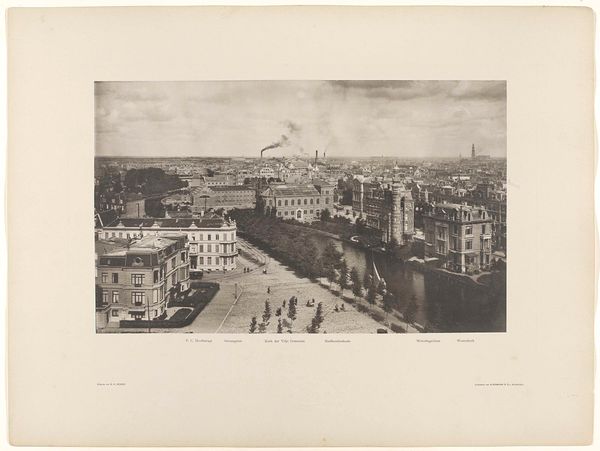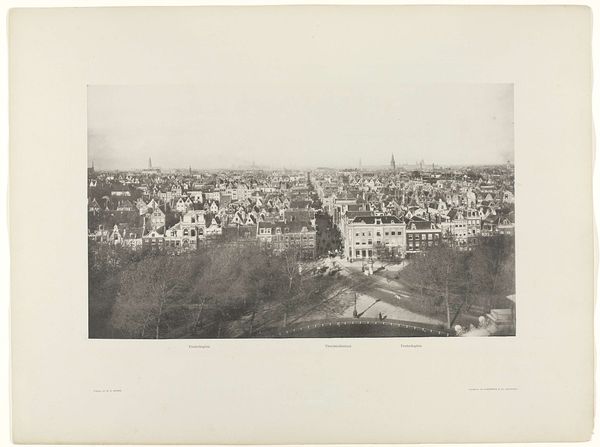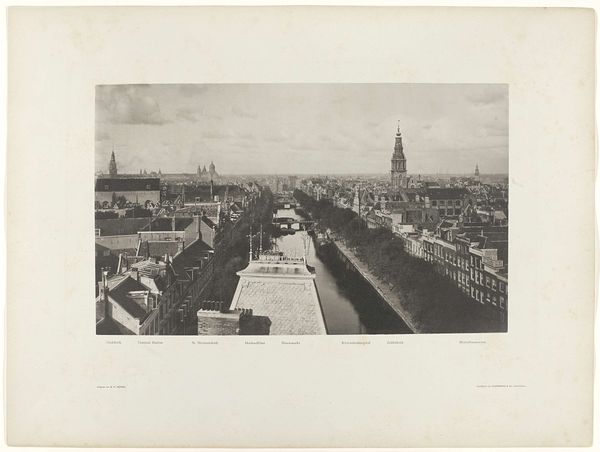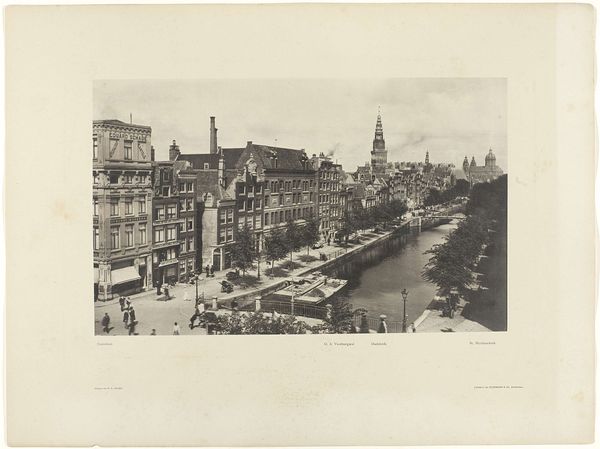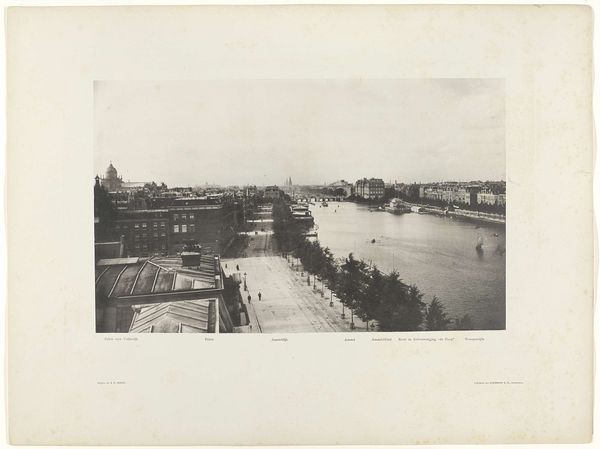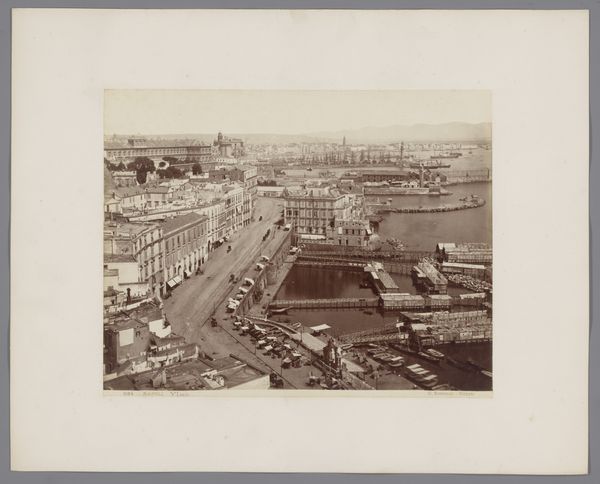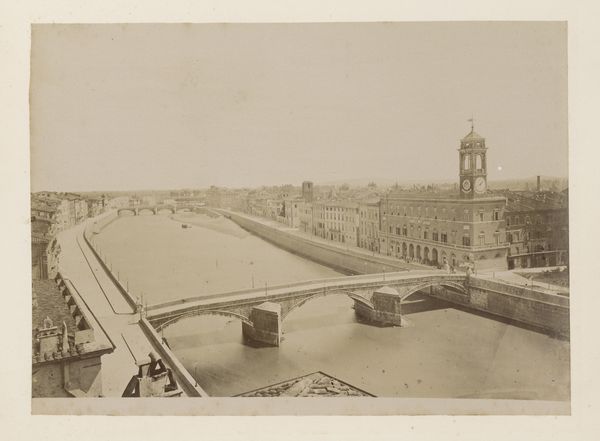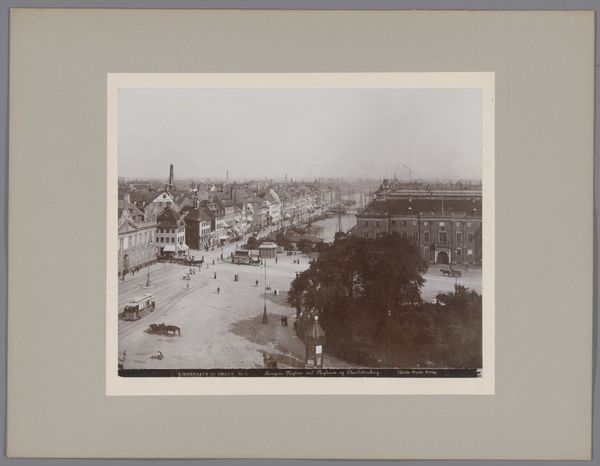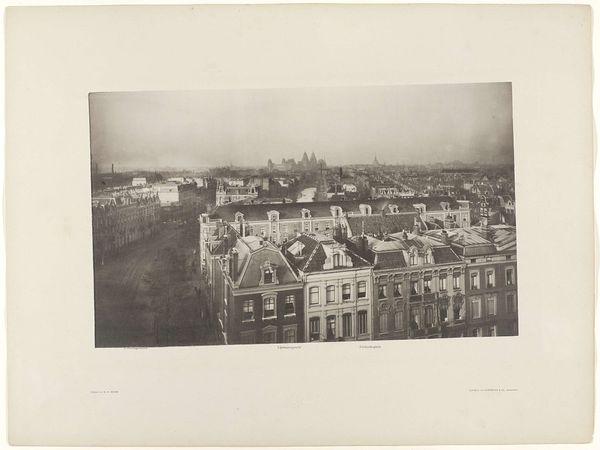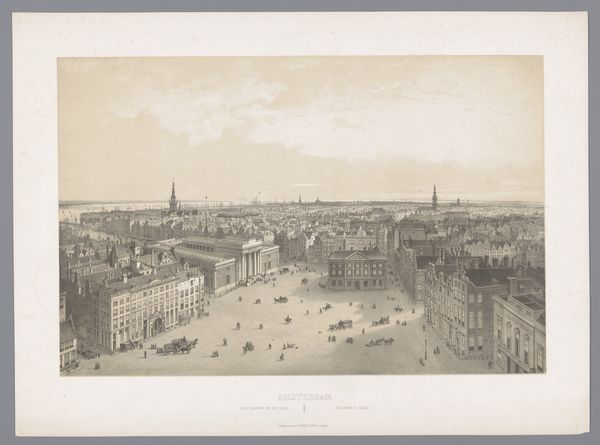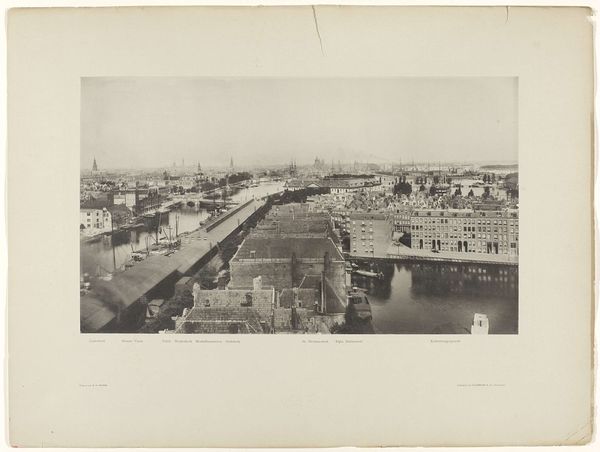
print, photography
#
pictorialism
# print
#
photography
#
cityscape
#
soft colour palette
#
monochrome
Dimensions: height 281 mm, width 468 mm, height 481 mm, width 640 mm
Copyright: Rijks Museum: Open Domain
Curator: This compelling photograph is titled "Leidseplein, gezien vanaf de Koepelkerk, Amsterdam," created by Gerrit Hendricus Heinen before 1894. Editor: The first thing that strikes me is the softness of it; a delicate greyscale with such a high vantage point gives a real sense of openness. It's quite soothing. Curator: Absolutely. The work aligns with Pictorialism, an international style of photography that privileged artistic effect over documentary accuracy. It emerged, in part, as an artistic approach where the focus was to bring photography closer to the arts. As such, pictorialism played an important role in debates about the artistic role and social acceptance of photography in artistic circles. Editor: Yes, it's that deliberate construction of mood that catches the eye. Notice how the tonality and composition emphasize light and shadow, lending this bustling cityscape a sense of serene, almost romantic stillness. Curator: Consider the scene: the Leidseplein, a vital intersection in Amsterdam. From my perspective, it's a portrayal of rapid urbanization. Heinen captures a pivotal point where historical architecture intersects with the rise of a modernizing cityscape. He offers a layered reading into Amsterdam’s evolving identity, caught between preserving tradition and embracing progress. Editor: The print medium contributes, as well. The texture of the paper—that physical object—imbues it with a kind of depth not easily captured by purely digital means. Curator: And note, too, the gaze of the photographer and by proxy us, the viewer. The Koepelkerk vantage point becomes a symbolic space, looking down on society in a way that reflects both the privileges and limitations inherent to that gaze. What socio-political stories are there to be told or left untold? Editor: The monochromatic palette really forces you to focus on the texture, the arrangements. And how the muted color seems to give every tone a certain weight. Well, it definitely gets you to ask new questions. Curator: Precisely, and that, I think, is the enduring quality of this work. The blending of history, of societal shifts, and the technical beauty, all invite discourse even now.
Comments
No comments
Be the first to comment and join the conversation on the ultimate creative platform.
